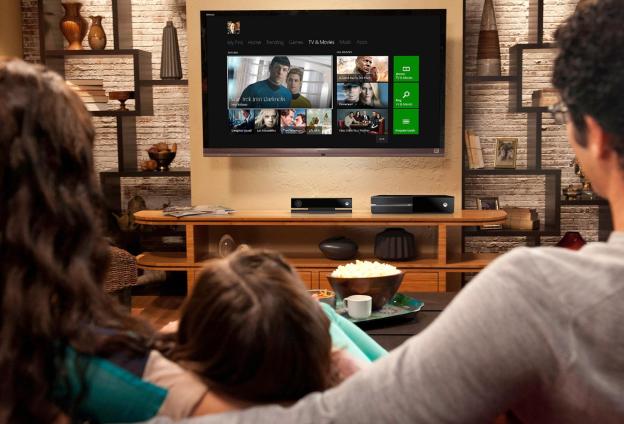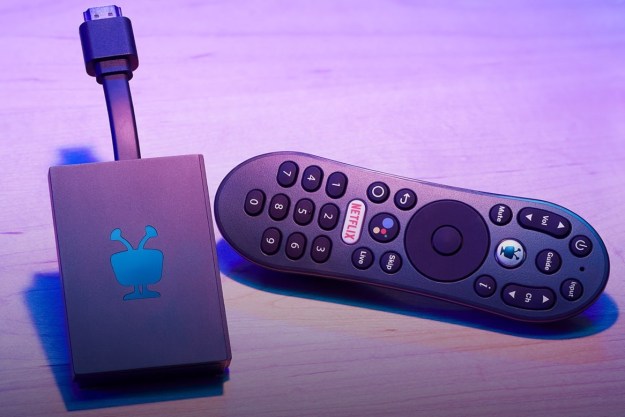
If I hear one more play on Lord of the Rings in reference to the Xbox One, I’m going to vomit. In its bid for galactic entertainment domination, Microsoft has crammed nearly every conceivable piece of cutting-edge tech into one box, hoping it will become the ultimate home entertainment hub. With those kind of credentials, the Xbox One at least appears to have the potential to become one of the most successful pieces of home-entertainment hardware ever produced – impressive, considering Microsoft has such a terrible track record at producing hardware (remember the Zune?).
Don’t get too excited yet, though.
Trouble is, many of the features Microsoft is tucking into its next-gen console already exist in other devices, and they don’t work well. Microsoft can’t just combine features in order to take over the nation’s living rooms, it has to do them all much, much better. Having used most of its botched predecessors, I have a few ideas on how to do just that.
Please enjoy this healthy snack of disclaimer
The Xbox One is not a gaming console – that term no longer applies – it is a full-on home media center.
Voice recognition is stupid
I don’t mean to suggest that the idea of voice recognition is stupid – it isn’t. I mean, who doesn’t want to boss inanimate objects around by barking orders at them? No, the issue is that the software itself is not intelligent enough to allow our commands to be an effective method of control. We’re not talking about simple speech-to-text here – that technology has been available for decades – what remains missing is a program smart enough to know what we want and how to deliver it, even when we wouldn’t have a clue where to start ourselves.
For example: If I ask Siri if Die Hard is streaming on Netflix, she will come back and ask me if I want to search the Web for “Is Die Hard streaming on Netflix.” No, Siri, I don’t. If I wanted to do that, I would open up a browser, speak the words into the search bar, and, I don’t know … read or something. I don’t want to read. I wanna watch friggin’ Die Hard. On Netflix. If Siri were smart, she’d check Netflix to see if Die Hard is available as a streaming movie and, if it is, give me the option to play it. And, hey, so long as we’re delivering the wow, if Die Hard isn’t available for streaming on Netflix, then show me where it is.

Now, it turns out that if you ask the right questions or issue the right commands, then you can kinda, sorta get what you want. But people don’t want to learn how a device thinks, they want the device to learn how they think. Has Microsoft built artificial intelligence smart enough and a database huge enough for the Xbox One to intuitively sort out what the hell we’re all going to say to it? Apple hasn’t yet, and neither has the developer behind Samsung’s voice recognition software. For the Xbox One to impress, it needs to make the voice command experience worthwhile, otherwise I’ll just give up on it like I have with my Samsung plasma and iPhone.
Gesture control is just so much…work
Much like voice control, gesture control is a technology that I find appealing from a conceptual point of view. A couple of years ago, I finally accepted that I will never be a real Jedi. So the idea of at least looking like a Jedi in front of my friends by controlling my TV with my hands, pointing and twisting objects from across the room, really works for me. Unfortunately, in its current form, gesture control just makes me look like an idiot.
Part of the problem is that I’m a lazy Jedi person. I don’t want to have to stand up or move to another part of the room so the camera can see me just so. And I don’t want to have to assume the posture of a Royal Guardsman or extend my arms at full length like some overachieving 3rd grader just to be recognized. If I’m going to use my bare hands to control my TV, it should be easy. I don’t want to exercise right now, I just want to watch my stories.

Granted, the Xbox One will probably make gesture control work wonderfully for games. But when you just want to turn up the volume on your TV – by more than a single increment at a time – do you really want to have to bust out some Harlem Shake-style maneuvers to make it happen? What about pausing or stopping the movie? Oh, I can use voice commands for that? You know what? I’ll just stick to this singular button on the remote that’s sitting right next to me. Unless Microsoft has done something amazing with gesture control that no other manufacturer has done yet, gesture control will remain an idea that’s ahead of its time.
TV integration
Jokes aside, this is an area with real potential. I love the idea of funneling shows from my cable or satellite box through a central media hub or, better yet, ditching the extra box entirely. And a more graphic, user-friendly, perhaps tile-based interface for exploring and navigating TV content shows tons of promise as well. But there are some big hurdles to leap here, as evidenced by today’s Google TV devices and Samsung Smart TV’s.
With only one HDMI input, users have no way of getting all the content they want to watch tied through the One.
But then there’s the issue of accessing on-demand content or shows stored on an integrated DVR, neither of which is a fun process through over-the-top boxes or smart TVs. I don’t see a fix for this, and I also worry about those who use stand-alone DVR boxes. With only one HDMI input, users have no way of getting all the content they want to watch tied through the One.
Finally, what can be done to appease those who get their TV over the air? Ideally, the Xbox One would include a TV tuner, otherwise a whole lot of people will have no use for the TV integration feature. The Xbox One already alienates anyone not using HDMI for everything, should it also preclude those without cable or satellite service?
Apps, apps and more apps
With the exception of Roku, Microsoft has a leg up on all its competitors when it comes to apps. For years, the Xbox 360 version of the Netflix app was one of the best available, although that is no longer the case. Our hope is that Microsoft will do what is necessary to ensure the Xbox One will come with the latest, fastest, most feature-rich and intuitive versions of popular streaming apps and keep them competitive well into the future. Oh, and it needs to have all the major bases covered. That includes Hulu Plus, Amazon Instant, Vudu, ESPN, MLB, and the rest of the usual suspects. If this list is accurate, then I think we’re in good shape.
But having the best version of these apps isn’t enough. Microsoft will also need a cross-platform search feature that works as well as Roku’s does. The biggest problem we face with streaming media right now is finding what we want to watch. It’s already difficult to remember which show is on which channel, but with more and more original series being produced by streaming services, that “challenge” stands to morph into a full-blown, rage-inducing fiasco . The ability to search across all services for the show or movie we want to watch is essential now, so Microsoft better bring it.
Media sharing/streaming
Apple’s got Airplay, Google is developing its alternative to Airplay, Samsung’s got AllShare tied up for Android devices and you can swipe media to Panasonic’s Smart TVs – what’s Microsoft got planned? Maybe we’ll learn more at E3 (doubt it), but I can’t help but think the Xbox One will end up lacking a simple way to take the media that’s on our mobile devices and throw it up on our TVs, unless (maybe) you own a Windows phone or RT tablet.
We also need to know more about how the Xbox will handle media stored on a network. Is XBMC the only option, or can apps like Plex be added for a more streamlined experience? We’ll know for sure soon enough, but unless the Xbox One can serve up an entire library of photos, videos, movies and music quickly and in a graphically appealing way, then it fails on its one-box solution proposal.
It’s a long shot, folks
Though there is still much to learn about the Xbox One, I’m going to go out on a limb here and predict that it will not be the knock-out punch that Microsoft hopes it will be. While the idea of a single-box media solution may be appealing from a standpoint of simplicity, history has shown us that the more you cram into one device, the more compromises are made. I’m concerned that the Xbox One will wind up being a jack of all trades and master of none.
I would love to be wrong about this, though. God knows I could do with fewer set-top boxes in my entertainment systems. Right now I have a cable box, a Blu-ray player, an Apple TV (mostly because it offers AirPlay) a Google TV box (I’m not exactly sure why, actually) and a Roku (because it’s the best of the bunch). If the Xbox One is all its hyped up to be, I could ditch at least three of those boxes and the cluster-f of remotes that go with them, and that is something worth getting excited about.
Editors' Recommendations
- This is the cheapest Roku streaming device you can buy today
- The best Xbox One headsets for 2022
- One of the best TVs for PS5, Xbox Series X is $200 OFF for Cyber Monday
- Here’s how you can sign up for Sling TV for free right now
- Is a projector better than a giant TV? With this deal it might be







